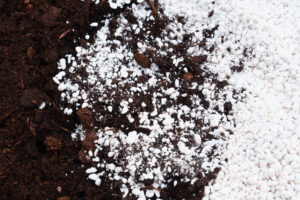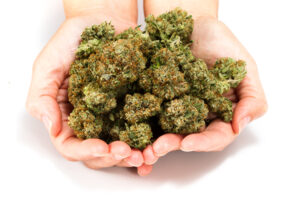How to Prepare the Soil for a Successful Outdoor Home Garden

When thinking about your dream outdoor home garden, your first thoughts probably go to what kind of vegetables, fruits, and flowers you’ll grow. In order to reach that fruitful harvest, you’ll need to first focus on the basics, like if you’ll grow in a container like a raised bed or in the ground and what kind of soil will help you achieve your goals. Unfortunately, if you want to help your plants grow as healthy as can be, getting your soil ready isn’t as easy as going to the store a picking up a few bags of potting mix or digging up some dirt in your yard. Fortunately, there are easy things you can do to enhance your soil environment. Use this guide to help you better understand your soil and prepare it for a successful outdoor home garden.
What You Need to Know About Your Soil
Before you can even take steps to prepare your soil, there are a few things you need to know about it:
- Type of Soil. At its base, soil is just a mix of rocks that have broken down over time. It usually falls into three categories based on rock size: sand (large), silt (medium), clay (small). The type of soil determines how water is stored and drained, how much oxygen is available at the root level, how well soil holds nutrients, and how quickly the soil erodes. Each has their own benefits and drawbacks, so you probably won’t be surprised to learn the best soil is a mixture of all three, called loam. Loam crumbles easily, meaning it will not form a hard ball when squeezed or crack when dry.
- Soil pH. Your soil’s pH level has a huge impact on the success of your plants no matter what you’re growing because it influences the availability of nutrients and minerals and impacts how well your plants can use these minerals. Generally, the best soil pH for a lawn garden is between 6.0 and 7.0. You can find a test at your local garden center and make adjustments as necessary.
- Soil Nutrition Profile. There are three primary nutrients plants need to thrive: nitrogen, phosphorus, and potassium. Nutrient profiles vary depending on soil type and whether or not you supplement your soil with organic matter. Soil test can determine if your soil is deficient in certain minerals so you can decide what kind of fertilizer is necessary to support plant growth.
How to Prepare the Soil for An Outdoor Garden
Step One: Clear Out Debris and Rocks
Whether you are starting from scratch or reusing raised beds from last year, it’s important to get rid of the debris that will inhibit root growth for your plants. Remove any grass clumps, weeds, roots from last year’s harvest, and rocks. This will give you a clean slate to work with.
Step Two: Aerate and Loosen Soil
If plant roots had an arch nemesis, it would be soil compaction. Roots have a hard time breaking through thick clumps of soil, and compaction limits the oxygen needed at the root zone. You can aerate and loosen the soil using a soil tiller or handheld rake to make the job easier. Be sure to get at least 8″ to 12″ deep to give roots plenty of room to grow.
Step Three: Enhance with Organic Matter
Organic matter is a key addition to your soil that can help you grow bigger and better. It comes from living materials that fix and store carbon. This matter improves the soils’ capacity to store essential macro- and micronutrients in the soil like nitrogen, potassium, calcium, magnesium, and carbon. In addition, it increases water filtration and improves the water-holding capacity of the soil.
The most fruitful soil contains 4-6% organic matter, but that’s hard to measure. Your best bet is to add 2-3″ of compost or aged manure onto your soil. You can gently rake it into the soil, though you don’t need to go too deep as worms can do the digging for you!
Bonus Steps for Preparing Your Soil
If you really want to set your soil up for success, you can take these extra measures to give it a boost:
- Add weed barriers to prevent weeds. The best way to keep weeds at bay is to stop them before they reach your soil level. Before filling your ground garden or raised bed with your new soil mix, line the bottom with landscape fabric, which will prevent weeds from popping through the very bottom of your garden bed.
- Keep your soil warm. If you live in a colder climate, it might take longer for your soil to be fruitful because of chilly temperatures. You can help keep it warm by covering it with plastic or cardboard to contain the heat and keep out unwanted elements.
- Supplement with fertilizer. It’s helpful to know the profile of your soil, so if possible, it’s best to test your soil for nutrient levels. Using the information gathered, you can determine the nutrients your soil is deficient in so you can amend it with fertilizer.
Give Your Soil The Boost It Needs with [company].
Harvest Hero Enhanced Perlite Mix is a nutrient-rich soilless amendment and growing medium that is a 3-in-1 blend comprised of perlite, diatomaceous earth, and essential nutrients. This patent-pending mix has been designed by Harvest Hero’s team of engineers and agronomists to improve soil structure for nutrition which promotes bigger plants and bigger yields. Harvest Hero Enhanced Perlite Mix will meet your plants’ needs throughout the first critical 6 weeks of growth by improving soil quality, providing plant nutrients, and amending soil properties to make it easier for the plant to absorb and translocate essential plant nutrients to the root system.
Consisting of domestically sourced perlite, diatomaceous earth, and essential nutrients, Harvest Hero’s 3-in-1 Enhanced Perlite Mix is unlike anything on the market. Try it today and see the difference a Hero makes in your home garden!



